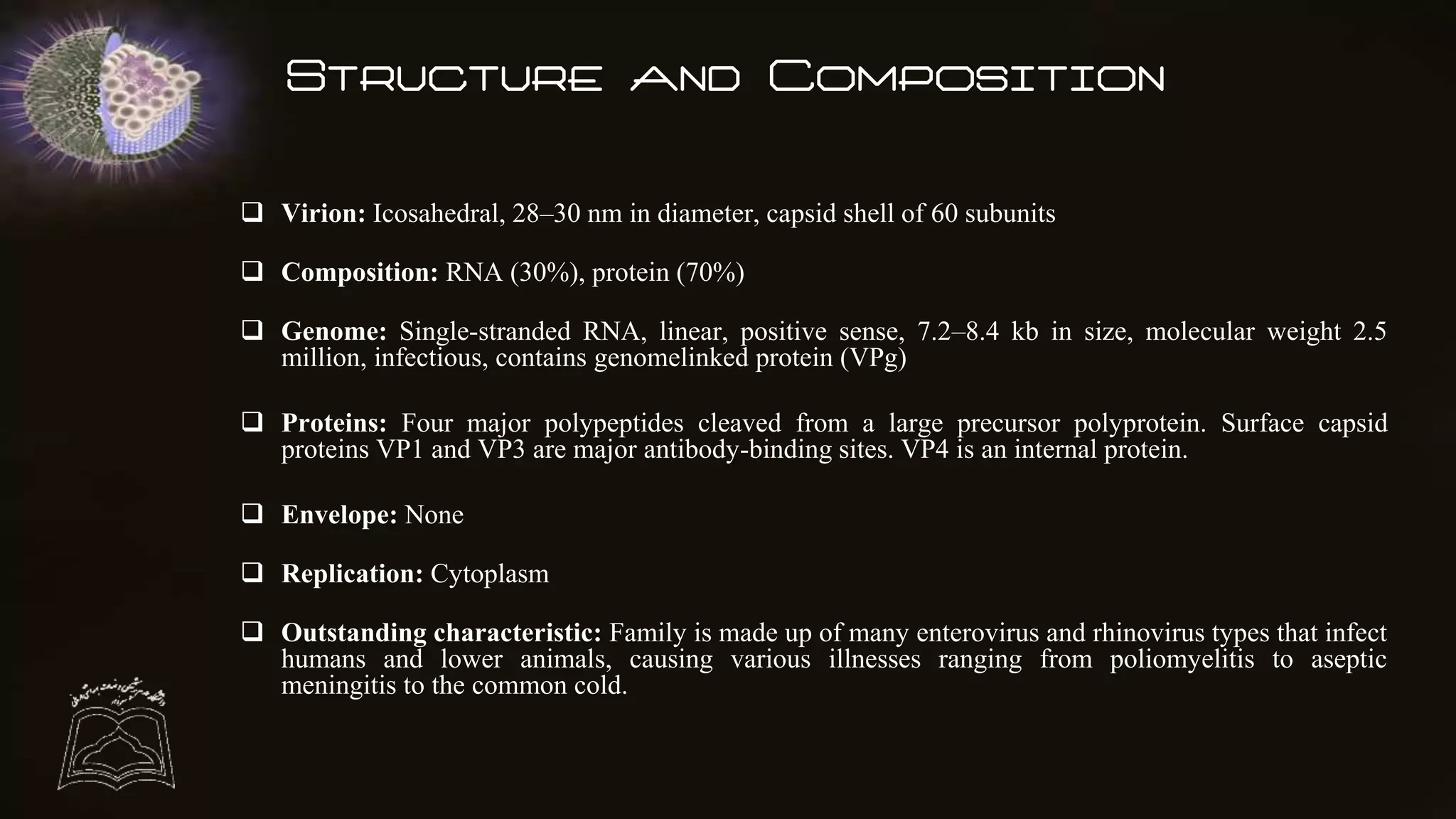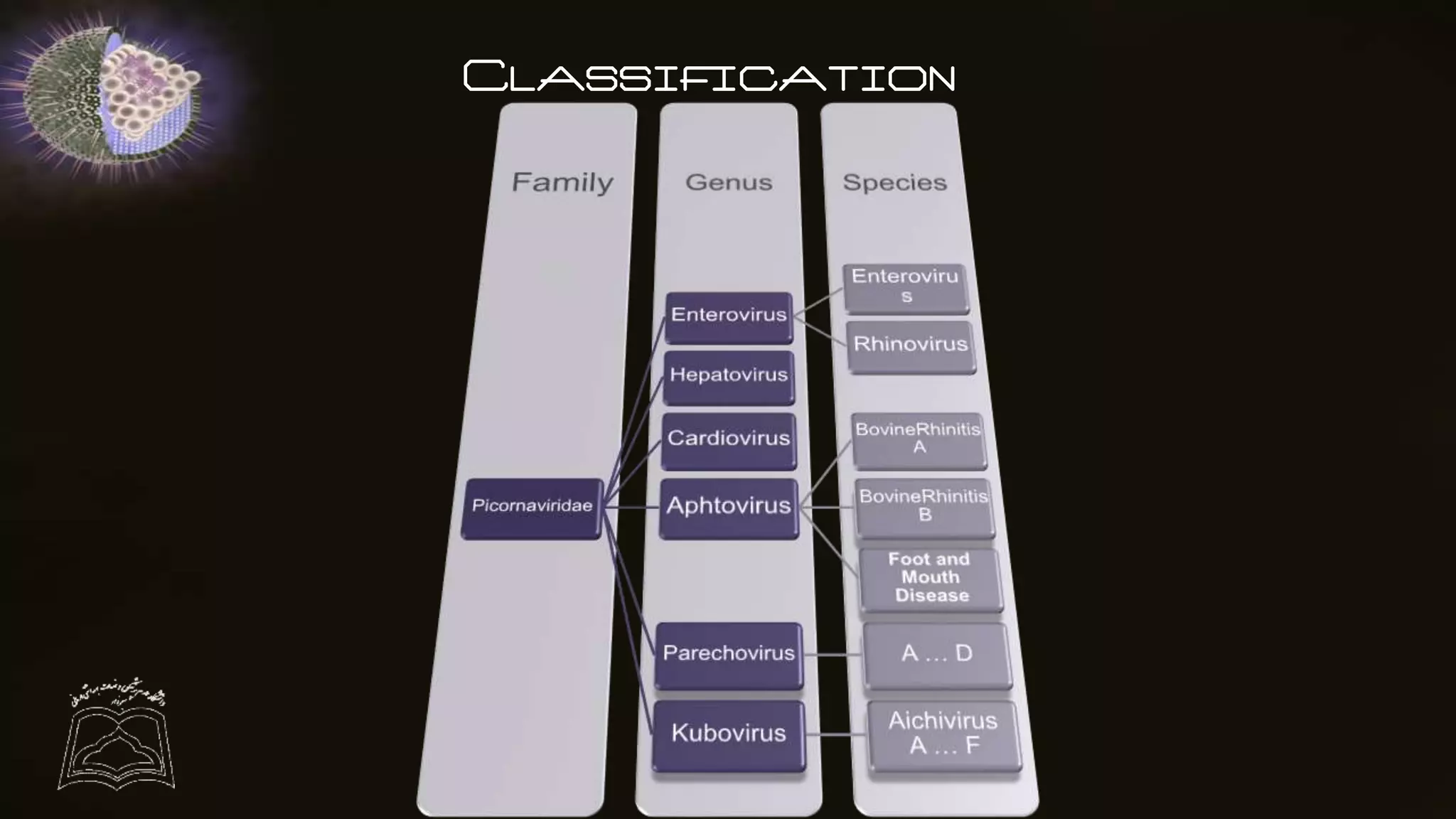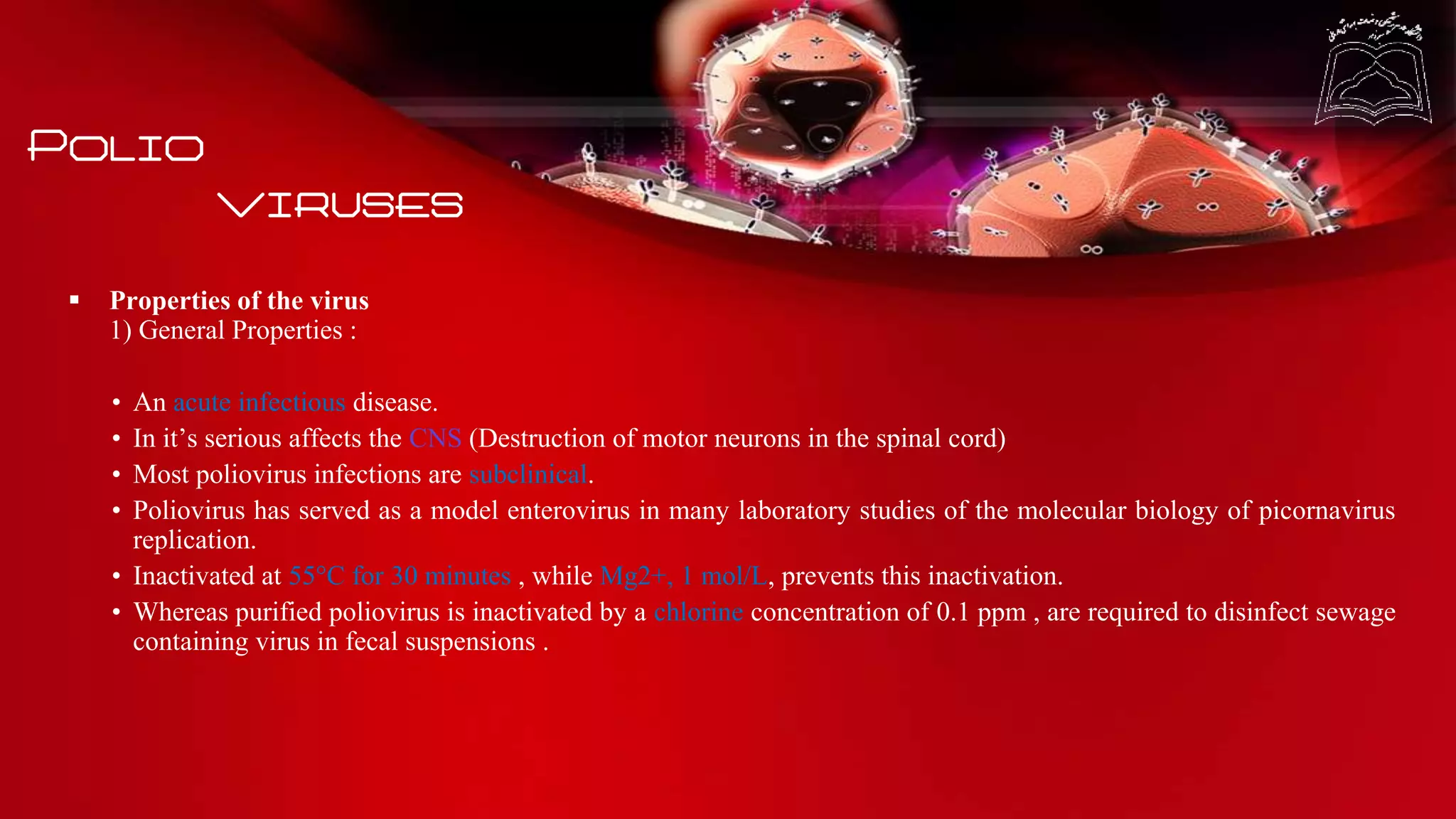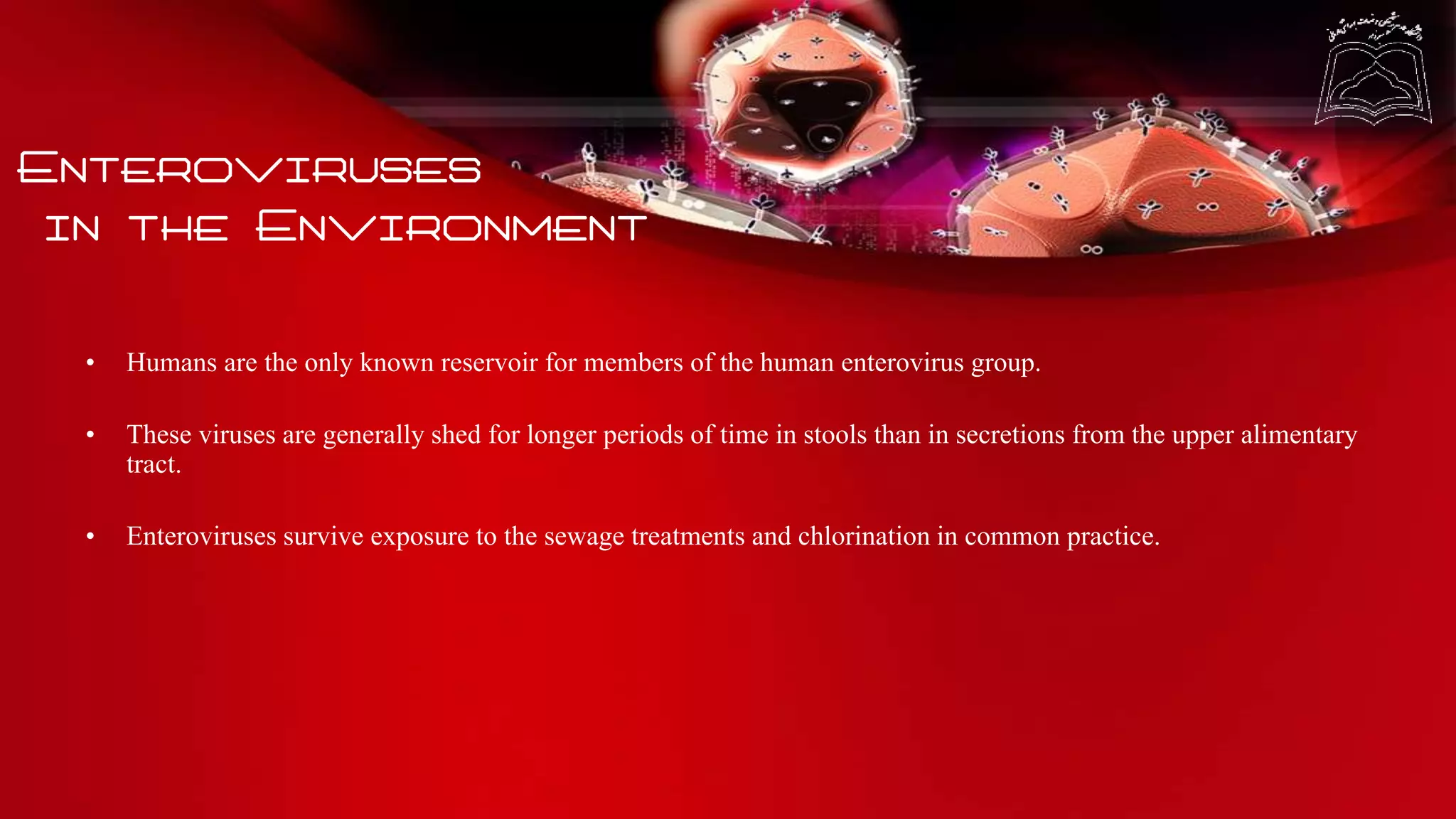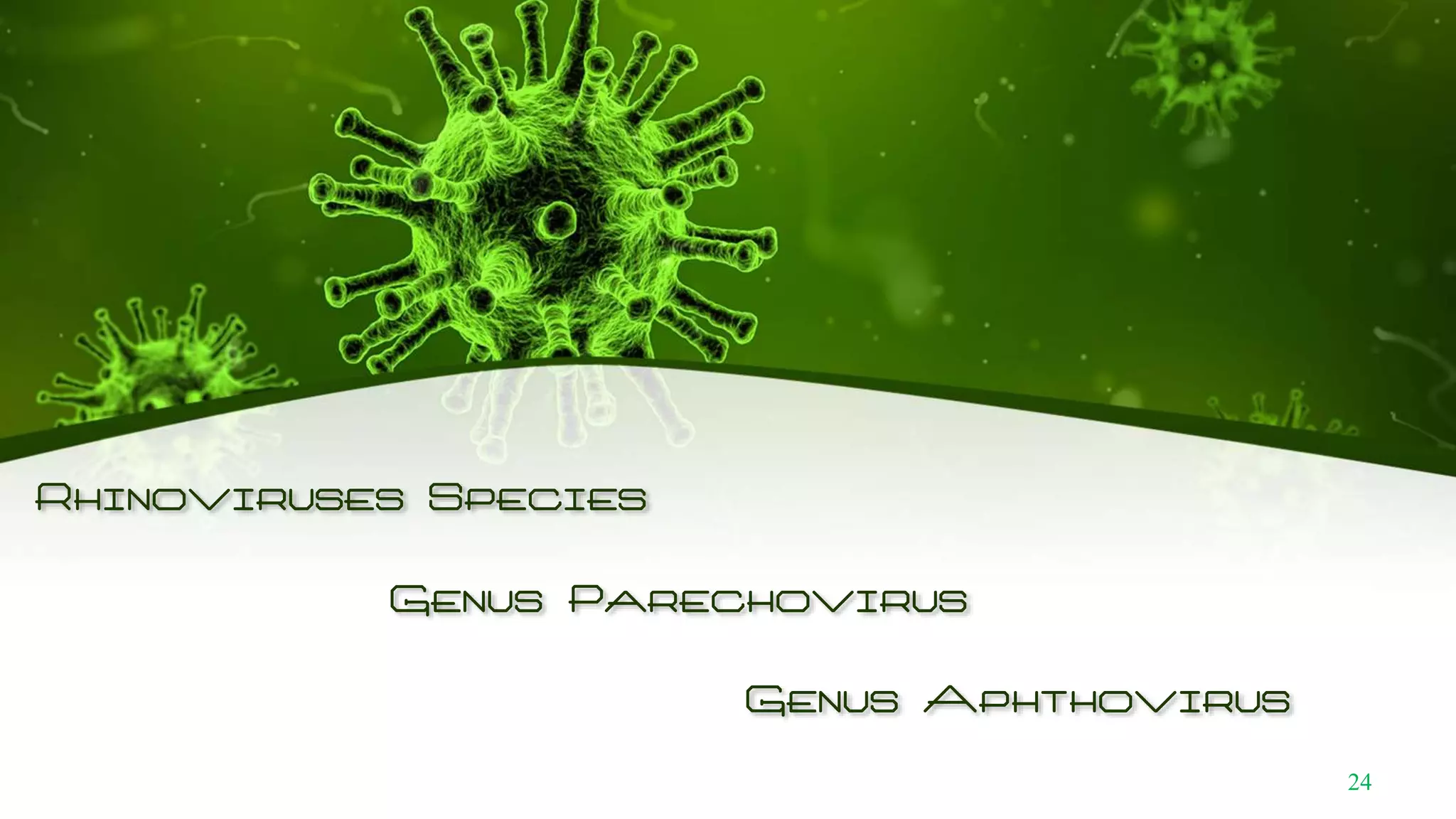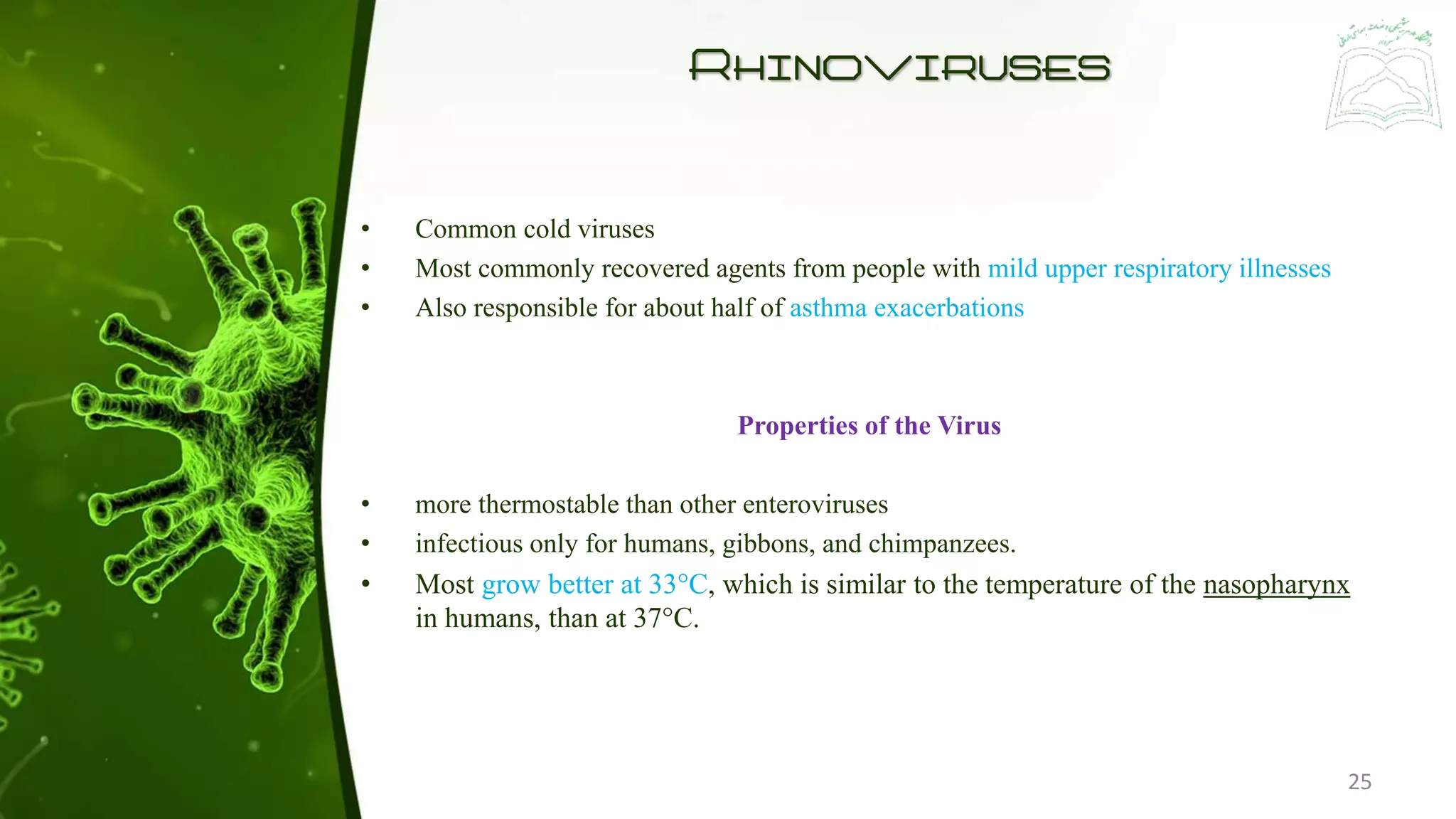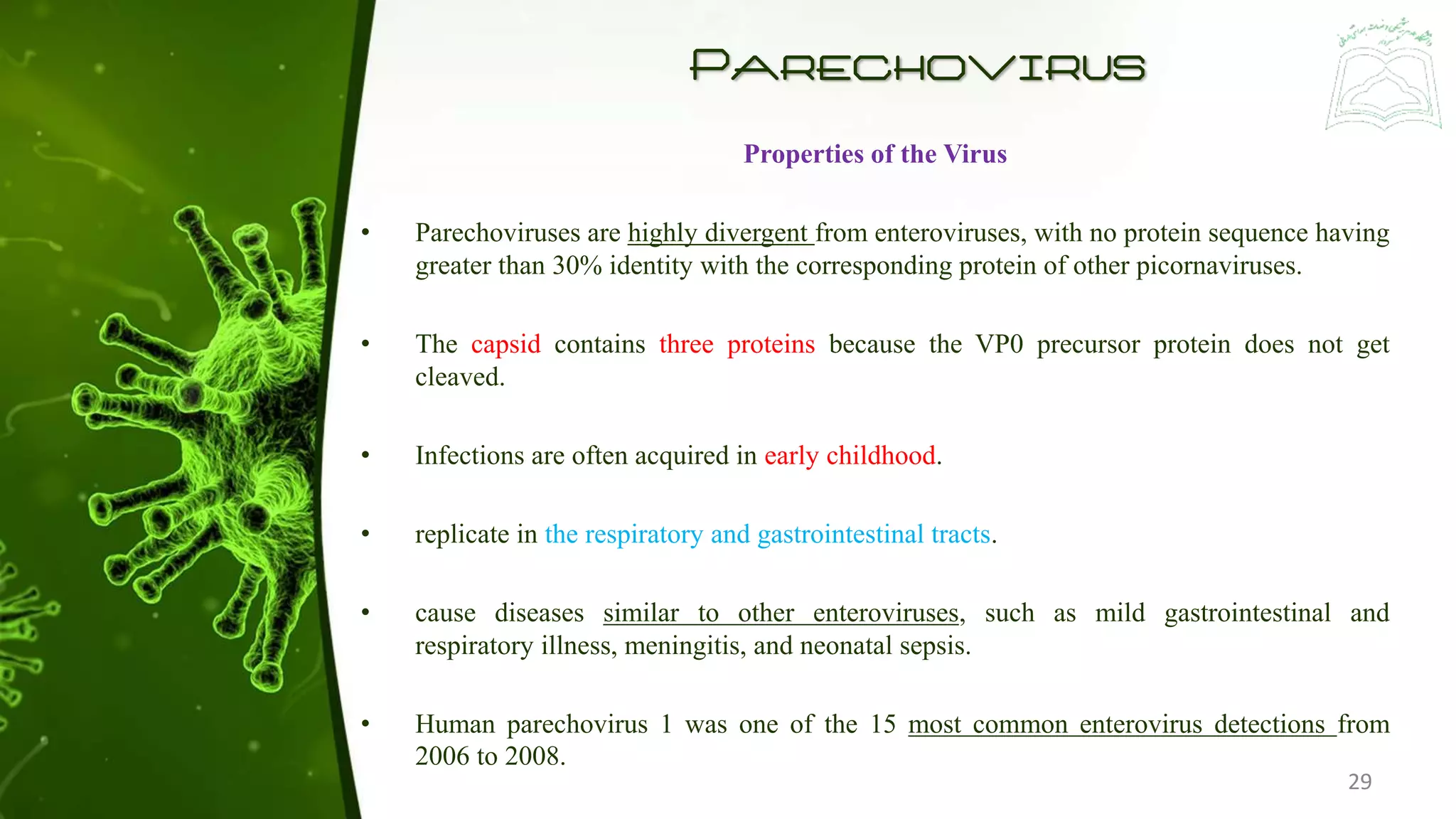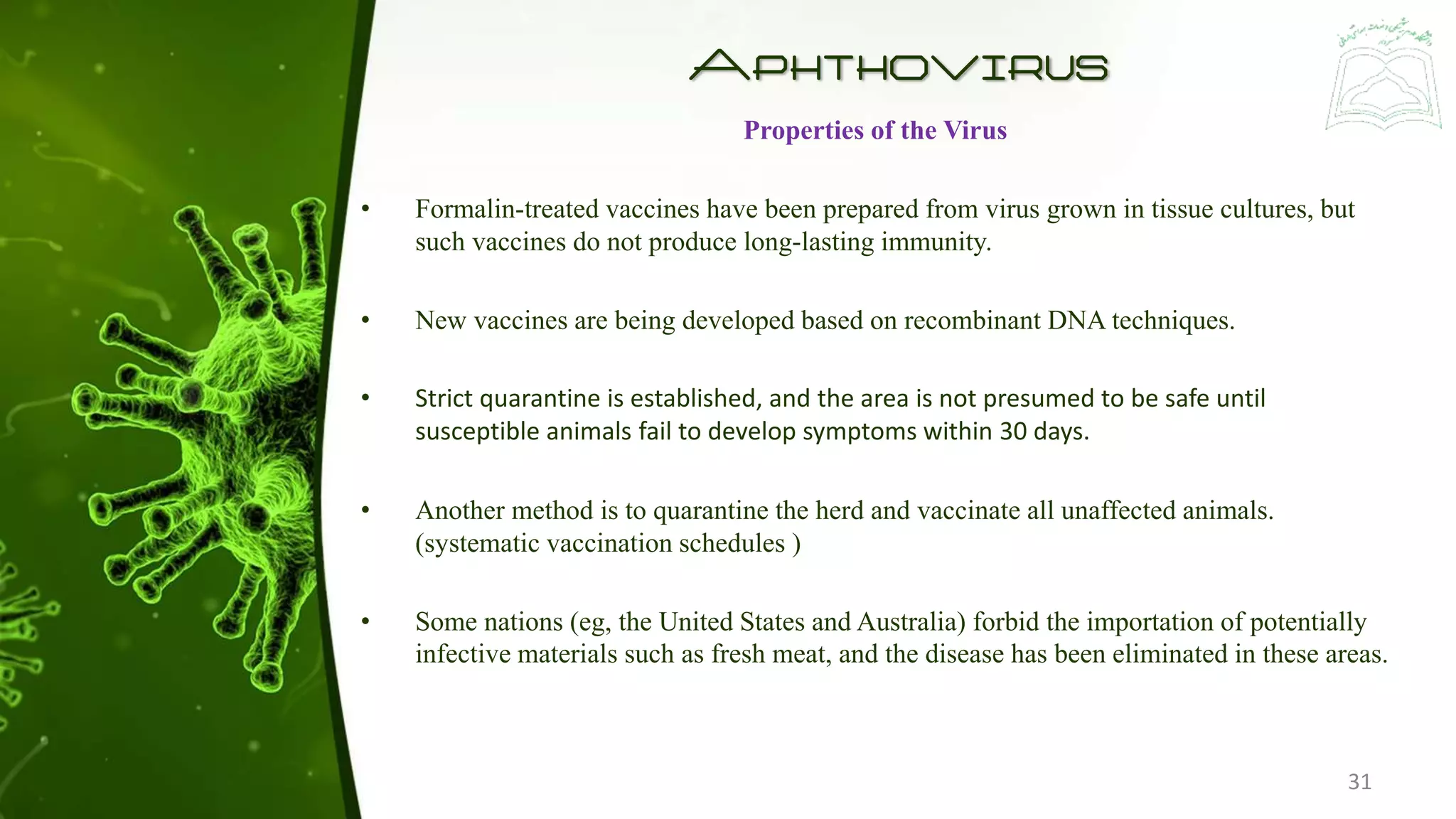Picornaviruses are a diverse family of small, non-enveloped RNA viruses, primarily categorized into enteroviruses and rhinoviruses, which cause a range of diseases in humans from mild respiratory infections to severe conditions like aseptic meningitis and paralysis. They replicate in the cytoplasm of host cells, and the pathogenicity varies among different serotypes, with subclinical infections being more common than clinically manifest diseases. Despite the lack of specific treatments or vaccines for many of these viruses, preventive measures are essential to control their spread, especially in vulnerable populations.




